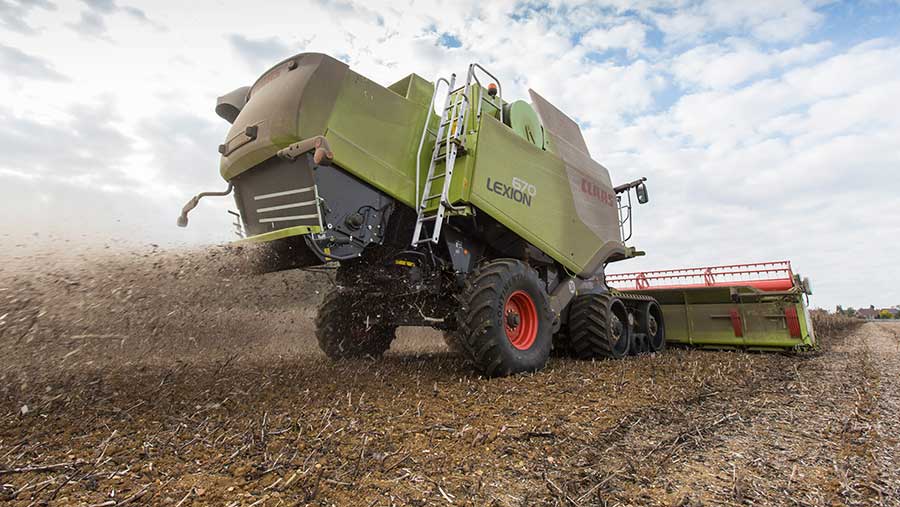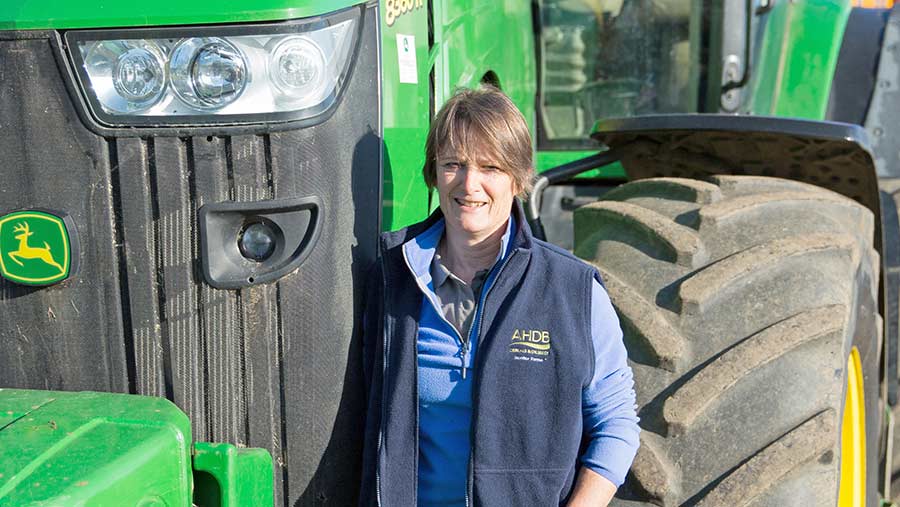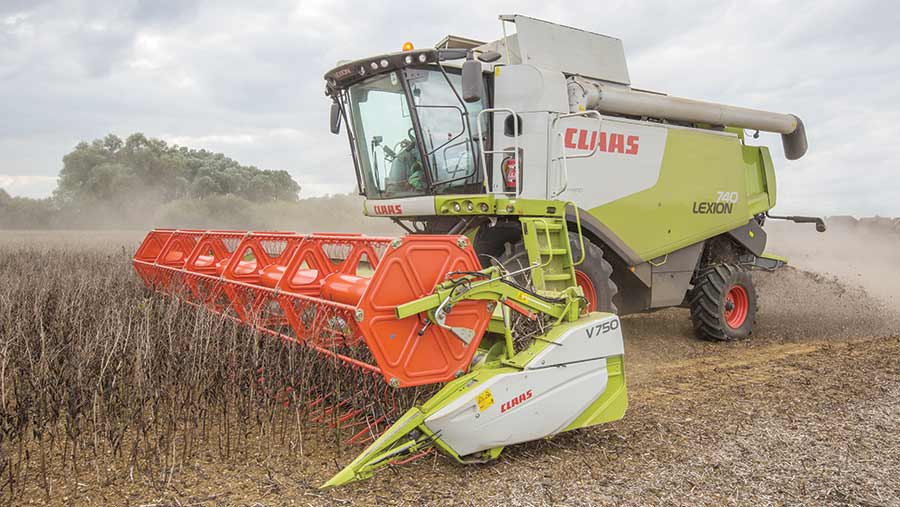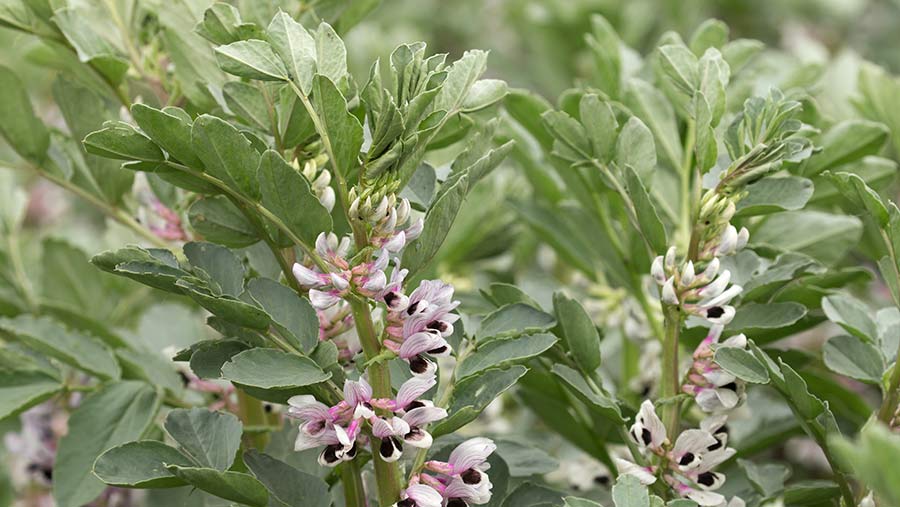Spring beans outperform oilseed rape on heavy Essex land
 © Tim Scrivener
© Tim Scrivener Spring beans are a better break crop than oilseed rape on heavy Essex clay land for grower Christy Willett after she harvested to top yield of 6t/ha last summer with a very healthy gross margin.
Problems with stem flea beetle and slugs when growing oilseed rape compared with an easier harvest workload and better entry into winter wheat with beans means Ms Willett is thinking of phasing out rapeseed completely.
Gross margins from spring beans topped £600/ha last summer, much better than many other spring-sown crop and starting to compete with some autumn-sown cereals.
“Spring beans are not fantastic if you just look at the gross margin, you have to look at the whole rotation,” she says.
See also: Pulses may gain from Michael Gove’s new farm strategy
Ms Willett, who farms 475ha of arable cropping at Parklands Farm near Chelmsford in partnership with her son Hew, grows a varied rotation of winter wheat, oilseed rape, winter rye, spring oats, millet, and soya beans.
Cutting seed costs
The 50ha of spring beans grown each year usually yields about 5t/ha, but last year a favourable dry spring and wet July pushed the yield up to 6t/ha.
An early drill date is key to achieving higher yields. Ms Willett managed to get on and drill on 13 March last season by using a subsoiler in the autumn to about 175mm, just below the depth of drilling.

Christy Willett
This roughens up her heavy clay soil, increasing the surface area and helping it dry out over the winter in the wind.
While she does not rule out using a cover crop in the future, she has found this method doesn’t necessarily dry out the land enough and can increase slug populations.
Although the crop produced a high yield, this has not been achieved at the expense of the bottom line, as a tight control is keep on input costs.
A general move away from using insecticides combined with heavy use of home-saved seed resulted in a healthy gross margin of £630.43/ha.
By home-saving seed the Willetts manage to keep seed costs to just £52/ha despite spring beans requiring a heavy seed rate of 330kg/ha in order to hit the target of 40 plants/sq m.
The seed is tested for germination, alongside ascochyta and stem nemotodes – a relatively cheap exercise compared with a failed crop.
Half a tonne of a new variety is also bought in each year for trialling on the farm, with the variety Vertigo being tested this year.
Farm facts
Parklands Farm, Chelmsford Essex
- 475ha arable cropping
- Mixture of owned and rented land
- Heavy London clay soil
- Rotation of wheat, oilseed rape, winter rye, spring oats, millet, spring barley, spring beans and soya beans
- Gradually phasing out oilseed rape in favour of spring beans and spring barley
- Strip-till system focused on grass weed management
Bruchid beetle
She is adamant the use of insecticides must give economic benefit, especially as they often prove ineffective in tackling the many pests associated with beans.
“We do use BruchidCast which gives us warnings about forecasted temperatures, but it is really hard to get insecticides on at the right time and they are not persistent enough to last,” she says.
While Ms Willett always aims to sell her beans for human consumption, whether she achieves it or not is very much in the “lap of the gods”, she adds.
In 2017, although the crop yield was particularly good, between 8-10% of the crop suffered bruchid beetle damage – quite a high level.
“My advice is to show your beans to as many people as possible,” Ms Willett says.
This approach last season meant although she initially had to sell a quantity to one merchant at £150-155/t as they were not deemed good enough quality for human consumption, another merchant decided they made the grade, returning £177/t.
“If you can, store the crop until May or June as people change their minds. Supply is starting to slow down then and it makes a big difference,” she says.

© Tim Scrivener
While the lack of recent demand from Egypt and the Middle East has depressed bean prices, Ms Willett is hoping that the changes to the ecological focus area rules around beans might help lift the price moving forwards.
Growers planning to sow beans in an ecological focus areas are now not allowed to use pesticides, and could instead opt to use a combination of hedges and field margins to fill their quota rather than grow the crop.
Not the answer for blackgrass
Key plus points to growing spring beans
- Low risk
- Easy to drill and harvest
- Benefit to overall rotation
- Good for the soil fertility and structure
- Opportunity to be low input to balance the lower outputs than other spring crops
- Allows blackgrass to be tackled in the autumn
For any growers thinking of introducing spring beans into their rotation to help control blackgrass, for Ms Willett, spring beans are not the answer.
While they allow the ground to be cultivated in the autumn and sprayed off in the spring with glyphosate before drilling, this is the only extra opportunity overwinter cropping to directly tackle blackgrass.
By drilling the seed deep at between 75-100mm another opportunity can be garnered to spray glyphosate before the beans emerge. But this is a risky strategy especially considering the cost of seed.
The bean crop itself is not competitive enough to crowd out blackgrass and does not have enough ability to smother enough of the grassweed.
Although as a rule, the farm wouldn’t use glyphosate preharvest, the high-yielding crop this season meant in places the crop was potentially thick enough to block the combine.
If a similar high-yielding crop was grown again, she would choose to desiccate over risking damage to the combine harvester.
On particularly bad blackgrass land, she instead drills spring barley. This year she is growing the variety Explorer, grown for the brewing of Budweiser beer, to get on top of the grassweed.
By choosing not to tackle blackgrass once the bean crop has established means Ms Willet could cut her herbicide costs in the future by moving away from the broad spectrum pre-emergence residual Nirvana (imazamox + pendimethalin).
Instead she is considering moving to the cheaper alternative of just using pendimethalin.

© Tim Scrivener
Low risk
Another way to cut costs is by being conservative with fungicides. Currently, the crop is sprayed twice but this could be reduced in the future.
This low-input approach combined with medium output provides a healthy margin at low risk, but it also benefits the following winter wheat crop.
Harvest can be as early as mid-August or as late as the first week of September, leaving just a short time between harvest and drilling.
Although it varies hugely there can be as much as 0.2t/ha uplift in the first wheat after beans in comparison to after oilseed rape.

